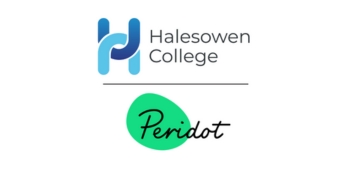At first glance, the recent call in these pages for a version of National Institute for Health and Care Excellence (NICE) for the special educational needs education sector makes perfect sense. But on reflection there are a number of challenges.
First, there is widespread misunderstanding about the nature of educational research. In spite of the hopes of many in the sector, the tools of medical research such as randomly-controlled trials, case cohort studies and clinical trials, when applied to education, are too often uninformative at best.
What’s more, in education we are now in uncharted waters when it comes to the prevalence of children with complex additional needs, in the most part due to the increased efficacy of medical practitioners.
And lastly, we operate now in a context where there is a much greater awareness of perceived need, which has led to a quadrupling of demand at every level in the sector.
The siren call of centralisation is strong for governments of all shades. However, there is a compelling case to be made that this drive to provide central expertise undermines the professionalism (and even self-confidence) of our workforce.
As a sector, we have seen the rise of the National Institute of Teaching, the demise of the National College for School Leadership and the disappearance of the General Teaching Council.
The last thing the sector needs right now is an ideologically-driven centre that dispenses the next big thing in SEND to schools and colleges up and down the country.
There is, however, a space for more informed educational research beyond the Education Endowment Fund. Funding could support smaller and more flexible research projects that are school- or locality-based. This could provide a more compelling, context-driven and diverse evidence base for practitioners.
This is the last thing the sector needs right now
It is also worth examining what other countries are doing to manage the increase in the number of children with learning gaps and barriers. However, in the absence of helpful guidance, what can system leaders and policymakers do now?
In the first instance, acknowledge that effective teaching meets the needs of the vast majority of pupils with barriers in mainstream settings.
Second, ensure that every school is fully inclusive in how it supports pupils whose behaviours, characteristics and challenges are not the norm.
Third, promote to the majority of parents that special arrangements for their children are not necessary; their needs will be well met in a well-run and inclusive setting.
For those parents and advocacy groups who loudly demand special treatment for their children, manage their expectations. The system cannot cater for every individual special educational need.
Crucially, given the significant link between poverty, a child’s family history and the likelihood of having additional barriers or learning gaps, funding should go to those with the greatest need.
And finally, measure success at 21 or 25, where young people can demonstrate they have agency and independence to lead meaningful lives rather than become statistics in the ever-increasing welfare crisis. Schools are not the only point of accountability for their success.
In the meantime, we school leaders must commit to developing our workforce to be even-more-expert teachers. This will allow us to meet the needs of the pupils in our contexts, to share professional development across our sector and to build capacity in every classroom, rather than devolving responsibility to those individuals with SEND in their title.
We also need to examine our own institutions to test whether they are suitably ambitious for all the pupils we serve.
And we must prioritise need over demand for the shrinking additional resources and capacity outside of mainstream settings in our local areas.
Currently, nearly twice as many pupils in the independent sector receive extra time in their formal exams as do in state schools.
We cannot continue as we are with a system hurtling towards bankruptcy, where SEND support is being most rationed in areas of highest deprivation, and where support is increasingly only available for the families who can afford it.
The way out of this doom loop is not centralisation. It is partnership and local innovation.












Your thoughts